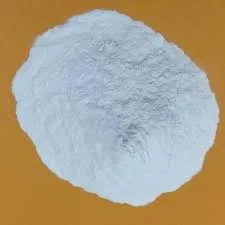
Nov . 17, 2024 10:50 Back to list
hpmc grades viscosity
Understanding HPMC Grades and Their Impact on Viscosity
Hydroxypropyl methylcellulose (HPMC) is a widely used polymer in various industries, including pharmaceuticals, food, cosmetics, and construction. One of the key characteristics of HPMC is its viscosity, which significantly influences the performance and applicability of the product. This article delves into the different grades of HPMC, their viscosity properties, and how these attributes affect their use across different sectors.
What are HPMC Grades?
HPMC is available in a variety of grades, which are determined by the degree of substitution and molecular weight. The degree of substitution refers to the extent to which hydroxyl groups in cellulose are replaced by hydroxypropyl and methyl groups. This substitution affects solubility, viscosity, and other physical properties of the polymer.
The grades of HPMC can be categorized based on their viscosity range, typically measured in centipoise (cP). Common categories include low viscosity (typically below 1000 cP), medium viscosity (1000-5000 cP), and high viscosity (above 5000 cP). Each grade serves different purposes based on its viscosity characteristics.
Viscosity Properties of HPMC
Viscosity is a crucial factor when selecting HPMC for specific applications. The viscosity of an HPMC solution is influenced by several factors, including concentration, temperature, and the shear rate applied to the solution. HPMC typically exhibits pseudoplastic behavior, meaning its viscosity decreases with an increase in shear rate. This property is particularly advantageous in applications requiring ease of application or spreadability.
- Low Viscosity HPMC These grades are primarily utilized in formulations requiring a smooth texture and easy mixing. They offer sufficient workability while being less sticky, making them ideal for applications like spray coatings and certain food products.
- Medium Viscosity HPMC This grade strikes a balance between ease of use and functional performance. It is commonly used in pharmaceutical formulations, including gels and ointments, due to its ability to provide better stability and binding properties. It is also popular in the food industry as a thickening agent.
hpmc grades viscosity

- High Viscosity HPMC High viscosity grades are employed in applications that demand significant thixotropic behavior. They are ideal for products requiring high stability and viscosity, such as adhesives and construction materials (e.g., tile adhesives, plaster). High viscosity HPMC can also modify the texture and mouthfeel in food products, enhancing the overall consumer experience.
Applications of HPMC Based on Viscosity
The choice of HPMC grade directly impacts product formulation and performance across various industries
1. Pharmaceuticals In this sector, HPMC is used as an excipient in drug formulations. Low to medium viscosity grades can improve the delivery of active pharmaceutical ingredients (APIs) while ensuring proper consistency in tablets and capsules. High viscosity grades are indispensable for sustained-release formulations.
2. Food Industry HPMC serves as a thickener, emulsifier, and stabilizer. Its ability to form gels makes it a valuable ingredient in sauces, dairy products, and ice creams. Low viscosity grades provide smoothness in beverages, while high viscosity grades create desirable textures in desserts.
3. Cosmetics and Personal Care In lotions, creams, and gels, HPMC enhances the viscosity, providing stability and spreadability. The choice of grade affects the product's feel and application characteristics, influencing consumer satisfaction.
4. Construction High viscosity HPMC grades are critical for the development of mortar and adhesives. They offer improved workability, water retention, and bonding properties, which are vital for the longevity and performance of construction materials.
Conclusion
In summary, HPMC is a versatile polymer with various grades tailored for different viscosity requirements. Understanding the relationship between HPMC grades and their viscosity properties enables manufacturers to make informed decisions for their specific applications. Whether in pharmaceuticals, food, cosmetics, or construction, the right grade of HPMC can significantly enhance product performance and consumer satisfaction. As the demand for high-quality formulations continues to grow, the importance of selecting the appropriate HPMC grade cannot be overstated.
-
Versatile Hpmc Uses in Different Industries
NewsJun.19,2025
-
Redispersible Powder's Role in Enhancing Durability of Construction Products
NewsJun.19,2025
-
Hydroxyethyl Cellulose Applications Driving Green Industrial Processes
NewsJun.19,2025
-
Exploring Different Redispersible Polymer Powder
NewsJun.19,2025
-
Choosing the Right Mortar Bonding Agent
NewsJun.19,2025
-
Applications and Significance of China Hpmc in Modern Industries
NewsJun.19,2025







